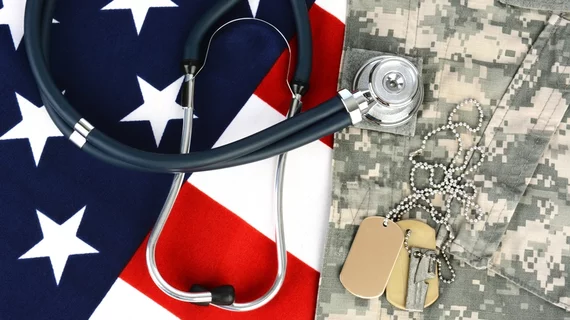ACR, VHA partnership improving quality of radiology care for US veterans
A partnership between the American College of Radiology (ACR) and Veterans Healthcare Administration (VHA) has bolstered the quality of care U.S. vets see at medical facilities across the country, according to a report published in the Journal of the American College of Radiology this month—and that’s only improving with the implementation of a mandatory three-year accreditation cycle.
“The field of radiation oncology entered an era of rapid technological progress in the late 1990s, which continues to this day,” lead author Rishabh Kapoor, MS, and co-authors wrote in JACR. “Since that time, the need for enhanced QA methodology has frequently been discussed among professional societies, who note that advanced radiotherapy technologies require closer monitoring than previously appreciated.”
That includes the technologies housed at VHA facilities, Kapoor, an affiliate assistant professor in the department of radiation oncology at Virginia Commonwealth University, and colleagues said, and since 2008 the ACR has provided contracted accreditation services for the VHA to evaluate its radiation oncology practices.
The VHA’s National Radiation Oncology Program is chartered “to provide operational oversight, set policy and ensure the quality of performance of all VHA radiation oncology services and sections,” according to the paper. The partnership between the ACR and VHA requires all radiation oncology facilities serving veterans to obtain ACR accreditation, as well as file corrective action plans (CAPs) if, for some reason, they aren’t accredited immediately following an ACR survey.
“Historically, accreditation has been perceived as the primary driver of safety efforts in healthcare,” Kapoor et al. wrote, noting it’s been more successful in promoting good safety practices than state-required error reporting. “VHA in general is oriented to safety improvement and excellence and views accreditation requirements as the bare minimum.”
In 2018, the partnership will be entering its fourth cycle of three-year accreditations, the authors said. In a review of the quantitative and qualitative results of these rounds, they made note of 92 surveys of VHA radiation oncology practices between 2008 and 2017.
Of today’s 40 VHA practices, 47 percent were accredited in the first cycle of surveys without requiring a CAP, Kapoor and co-authors reported. In the second and third cycles that number steadily improved, reaching 63 percent and eventually 67 percent in the latest cycle.
The authors also studied the number of corrective actions per required CAP, which showed improvement over accreditation cycles, as well. Not only did the frequently of survey results requiring a CAP decrease over time, they said, but so did the number of corrective actions per CAP.
“This report summarizes the quantitative and qualitative results of mandatory continuous accreditation when coupled with a uniform institutional requirement to correct deficiencies,” Kapoor et al. wrote. “Significant reduction in deficiencies is demonstrated over time through successive accreditation cycles, thus ensuring continuous radiotherapy quality and safety improvement at VHA practices.”

